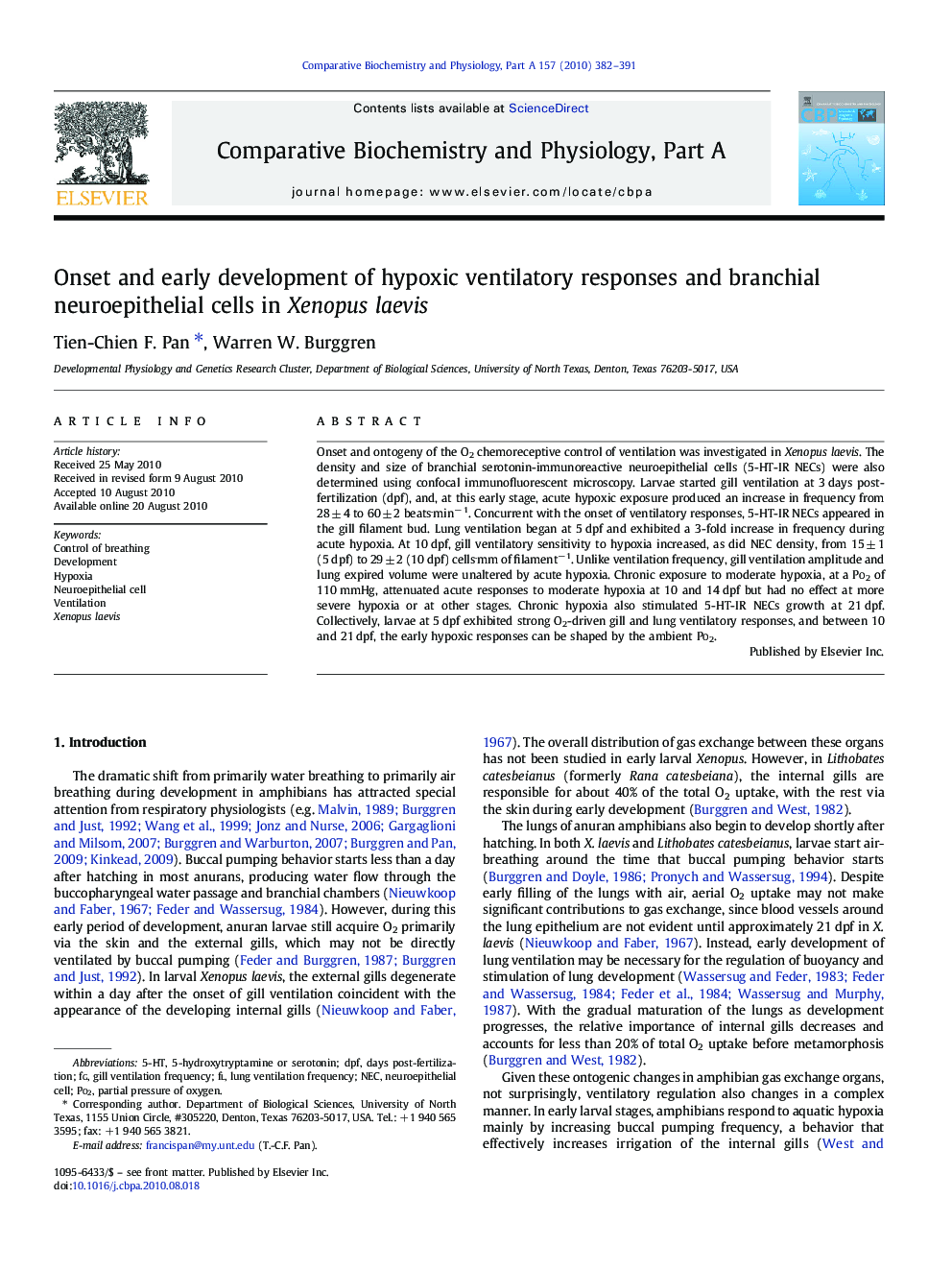| کد مقاله | کد نشریه | سال انتشار | مقاله انگلیسی | نسخه تمام متن |
|---|---|---|---|---|
| 1973986 | 1060332 | 2010 | 10 صفحه PDF | دانلود رایگان |

Onset and ontogeny of the O2 chemoreceptive control of ventilation was investigated in Xenopus laevis. The density and size of branchial serotonin-immunoreactive neuroepithelial cells (5-HT-IR NECs) were also determined using confocal immunofluorescent microscopy. Larvae started gill ventilation at 3 days post-fertilization (dpf), and, at this early stage, acute hypoxic exposure produced an increase in frequency from 28 ± 4 to 60 ± 2 beats.min− 1. Concurrent with the onset of ventilatory responses, 5-HT-IR NECs appeared in the gill filament bud. Lung ventilation began at 5 dpf and exhibited a 3-fold increase in frequency during acute hypoxia. At 10 dpf, gill ventilatory sensitivity to hypoxia increased, as did NEC density, from 15 ± 1 (5 dpf) to 29 ± 2 (10 dpf) cells.mm of filament−1. Unlike ventilation frequency, gill ventilation amplitude and lung expired volume were unaltered by acute hypoxia. Chronic exposure to moderate hypoxia, at a Po2 of 110 mmHg, attenuated acute responses to moderate hypoxia at 10 and 14 dpf but had no effect at more severe hypoxia or at other stages. Chronic hypoxia also stimulated 5-HT-IR NECs growth at 21 dpf. Collectively, larvae at 5 dpf exhibited strong O2-driven gill and lung ventilatory responses, and between 10 and 21 dpf, the early hypoxic responses can be shaped by the ambient Po2.
Journal: Comparative Biochemistry and Physiology Part A: Molecular & Integrative Physiology - Volume 157, Issue 4, December 2010, Pages 382–391